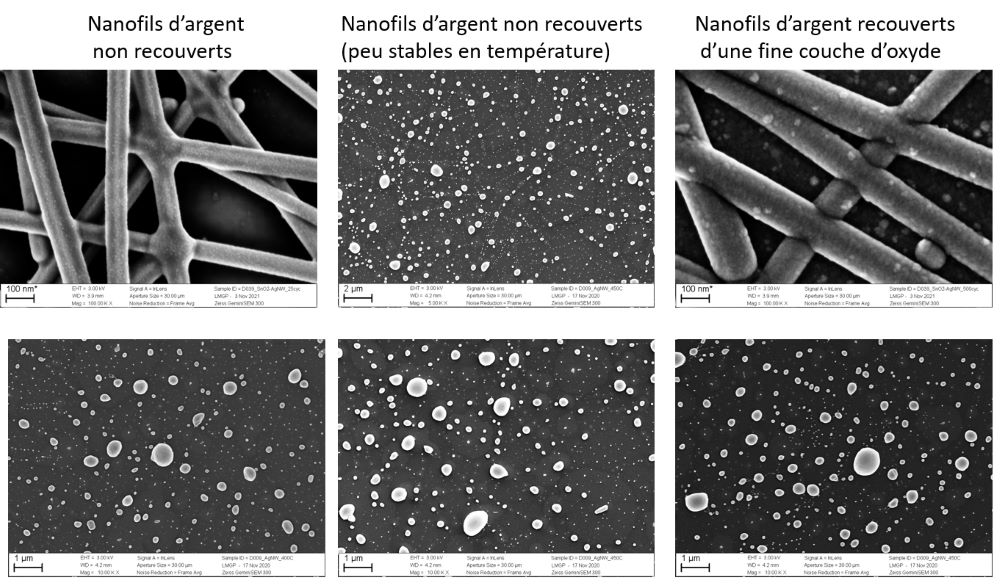
Silver has been used in medicine for thousands of years, and scientists are familiar with its powerful antibacterial properties. Today, silver nanoparticles are incorporated into many everyday products.
Daniel Bellet, a researcher at LMGP, was working on transparent conductive oxides for use, for example, in heating films used in aircraft cockpits for ultra-fast de-icing.
After a meeting, he set about developing silver nanowire networks, anticipating applications in a variety of fields. Only a few dozen nanometres long and thick, silver nanowires form a dense network that is both conductive and transparent. ‘When you run a current through it, the network heats up due to the Joule effect,’ says Daniel Bellet, who is also Scientific and Academic Director of Carnot Energies du Futur. 'And because the nanowires are extremely thin, they lose material through Plateau-Rayleigh instability**, releasing silver nanoparticles into the environment.'
To overcome this phenomenon, which would eventually destroy the nanowires, the researchers covered them uniformly with a fine layer of metal oxide (zinc or tin), making the nanowires thinner but preserving the transparency of the network they form. 'We can easily go up to 400 degrees without damaging the network.' The nanowires covered in oxide are again covered with a very thin layer of silver. 'This allows us to run electrical current through it without damaging the network, while maintaining the effect of releasing silver nanoparticles on demand and, thus, the controlled antibacterial effect.'
A proof of concept was demonstrated during a thesis in collaboration with LGP2, and a patent has been filed. Researchers are planning to use this film principle to control the release of antibacterial agents in catheters used in intensive care units. It can also be used to create self-disinfecting surfaces, such as on the tablets surgeons use during operations or in food processing machines.

*CNRS, Grenoble INP – UGA, UGA
***Agefpi, CNRS, Grenoble INP – UGA, UG
**The Plateau-Rayleigh instability is a physical phenomenon that explains how a stream of liquid breaks up into droplets. Imagine a long stream of water coming out of a tap. Due to surface tension forces, this stream does not remain uniform along its entire length. Small disruptions on its surface grow larger and create ripples. When the ripples reach a certain size, they cause the stream to break into distinct segments. These segments then contract, reducing their surface areas and forming spherical drops. This phenomenon is the result of the surface tension forces that seek to minimise the energy on the surface and the disruptions, which exacerbate irregularities.



